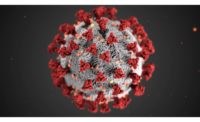Is it possible for experts from the leading nutrition and sport medicine professional organizations to come to consensus on how to strategically address obesity? The answer can be found in a peer-reviewed paper, Energy Balance at a Crossroads: Translating the Science into Action, which provides specific recommendations for biological, lifestyle and environmental changes that will successfully guide children and families toward healthier weights.
The paper, published jointly in the July editions of Medicine & Science in Sports & Exercise® and in the Journal of the Academy of Nutrition and Dietetics, outlines steps to incorporate energy balance principles into public health strategies. The recommendations include:
- Integrate energy balance into curriculum and training for both exercise science and nutrition professionals and strengthen collaborative efforts between them.
- Develop competencies for school and physical education teachers and position them as energy balance advocates.
- Develop core standards for schools that integrate the dynamic energy balance approach.
- Work with federally funded nutrition programs like the Cooperative Extension Service and school lunch programs to incorporate energy balance solutions.
- Develop messaging and promotional strategies about energy balance that American consumers can understand and apply to their lifestyles.
- Map out and support existing programs that emphasize energy balance.
“We have been discussing and analyzing the obesity epidemic for years. I am ecstatic to see actionable steps toward realistic solutions,” said Marianne Smith Edge, MS, RD, LD, FADA, the IFIC Foundation’s senior vice president of nutrition and food safety and co-author of the paper.
“Addressing obesity prevention through sharing best practices with consumers and community leaders, in addition to undergraduate and graduate level training, is a comprehensive approach that works.”
The paper is an outcome of the October 2012 expert panel meeting titled “Energy Balance at the Crossroads: Translating the Science into Action,” hosted by ACSM, Academy of Nutrition and Dietetics and the US Department of Agriculture (USDA)/Agriculture Research Service.
The IFIC Foundation, along with ILSI North America, the Academy of Nutrition and Dietetics, and the American College of Sports Medicine, held a webinar for health professionals Aug. 28 on the same subject as the paper; it can be viewed here.
In addition to Smith Edge, the article’s co-authors are Melinda M. Manore, Oregon State University; Katie Brown, Academy of Nutrition and Dietetics Foundation; Linda Houtkooper, University of Arizona; John Jakicic, University of Pittsburgh; John C. Peters, University of Colorado, Denver; Alison Steiber, Academy of Nutrition and Dietetics Foundation; Scott Going, University of Arizona; Lisa Guillermin Gable, Healthy Weight Commitment Foundation; and Ann Marie Krautheim, National Dairy Council.
To access the article, click here.
In a related vein, the IFIC Foundation’s Food Insight newsletter published an article in its September issue about a new study in the American Journal of Medicine that suggests that decreased physical activity is a bigger culprit in our nation’s expanding waistlines than increased calorie intake. The story is accompanied by an infographic summarizing key findings.
For interview requests and any other questions, please contact the IFIC Foundation media team at 202-296-6540, Raymond@ific.org.
Source: IFIC Foundation






